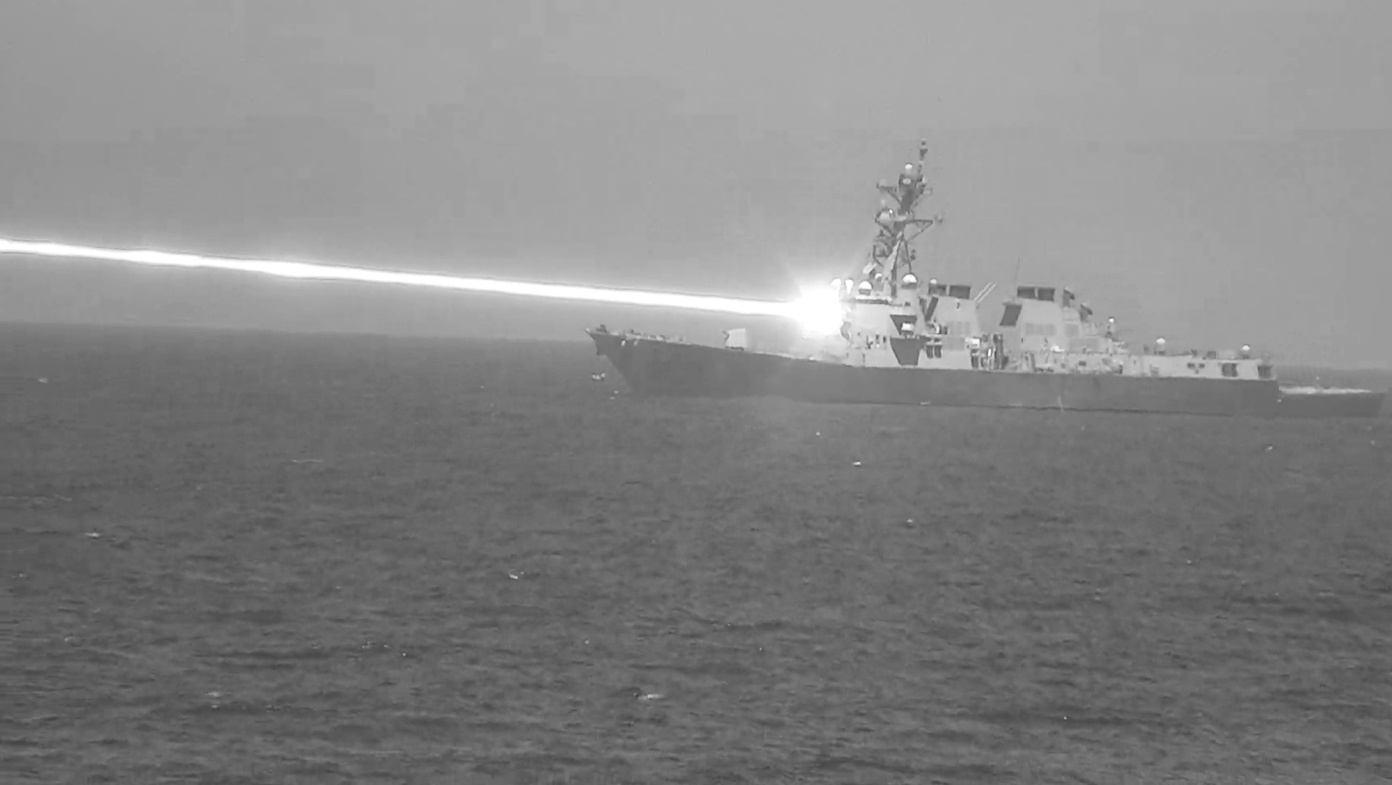In the vast expanse of the ocean, under a sky that stretched endlessly above, a new era of naval warfare was being heralded. The USS Preble (DDG-88), a formidable Arleigh Burke-class destroyer, was poised to redefine modern combat with its latest technological marvel - the High Energy Laser with Integrated Optical Dazzler and Surveillance (HELIOS) system. On this particular day, the sea was calm, the air was clear, and the stage was set for a groundbreaking demonstration that would showcase the might and precision of laser technology in naval defense.
The demonstration was part of a broader initiative by the US Navy to integrate directed energy weapons into its arsenal, aiming to neutralize threats with speed, precision, and cost-effectiveness unmatched by traditional munitions. The CCM (Combat Camera) team was on board to document this historic event, capturing every detail to evaluate the performance, functionality, and capabilities of the HELIOS system against an unmanned aerial vehicle (UAV) target.

As the morning light began to illuminate the horizon, the crew of the USS Preble was abuzz with anticipation. The ship, known for its advanced Aegis Combat System and its role in numerous international operations, was now at the forefront of a technological revolution. The HELIOS system, developed by Lockheed Martin, was a layered laser defense system designed to provide a rapid, scalable defense against a range of threats including drones, small boats, and potentially even missiles.
The system itself was a marvel of modern engineering. It consisted of a high-energy laser capable of delivering powerful beams of light to destroy or disable targets, combined with an optical dazzler for non-lethal engagement and surveillance capabilities for target acquisition and tracking. This integration allowed for a flexible response, tailored to the threat level and operational requirements.
The demonstration began with the identification of a simulated threat - a UAV flying towards the ship. The crew, trained extensively in the operation of the HELIOS, quickly engaged the system. The CCM team, positioned strategically around the ship, prepared their cameras to capture the moment. The air was electric with the anticipation of witnessing the first live-fire engagement of this kind.
As the UAV approached, the HELIOS system locked onto its target. The laser was activated, and a brilliant beam of light shot out from the destroyer, cutting through the morning mist with precision. The beam, invisible to the naked eye but captured vividly by the CCM's specialized cameras, hit the UAV with pinpoint accuracy. The drone, overwhelmed by the intense energy, was incapacitated almost instantly, falling into the sea in a controlled descent, its threat neutralized.
The imagery collected by the CCM was critical. It provided visual evidence of the HELIOS system's effectiveness, showing not just the engagement but also the aftermath - the UAV's descent into the ocean, ensuring no collateral damage or debris that could pose a hazard. The footage would be analyzed to assess the system's performance metrics like engagement time, target accuracy, and the environmental impact of the laser's operation.
Post-engagement, the crew gathered to review the footage. The images showed the laser beam as a stark, powerful line of light against the backdrop of the ship and the sea, a visual testament to the technological prowess now at their disposal. The analysis would reveal that the HELIOS system not only met but exceeded expectations in terms of its ability to engage and neutralize aerial threats swiftly and with minimal collateral damage.
This demonstration on the USS Preble was not just a test of technology; it was a statement of intent. It showcased the Navy's commitment to innovation, adapting to modern warfare's demands where threats could come from the air, sea, or land in forms both conventional and unconventional. The successful engagement highlighted several key advantages of laser weapon systems:
- Precision: The laser could target with extreme accuracy, minimizing the risk to non-combatants and reducing unintended damage.
- Cost Efficiency: Unlike traditional munitions, which are costly per shot, the laser's energy cost per engagement was significantly lower, offering a more economical defense option.
- Speed: The speed at which the laser could engage a target was nearly instantaneous, providing a rapid response capability that was critical in fast-paced combat scenarios.
- Versatility: The integration of dazzlers allowed for non-lethal options, providing a spectrum of responses from warning to disabling to destruction, depending on the situation.
- Sustainability: With no need for physical ammunition, the system could engage multiple targets in succession without the need for reloading, only requiring power which modern naval vessels are well-equipped to supply.
The implications of this successful demonstration were profound. It signaled a shift towards a future where naval engagements might increasingly involve directed energy weapons, changing the dynamics of naval warfare. The USS Preble, with its successful deployment of the HELIOS system, had not only validated a new weapon system but had also set a precedent for future naval operations.
As the day progressed, the images and data from the demonstration were sent back for further analysis and to be shared with naval command and defense stakeholders. The CCM's role was crucial in this, providing a visual narrative that complemented the technical data, making the success of the HELIOS system tangible and undeniable.
The crew of the USS Preble felt a sense of pride, knowing they were part of history. The demonstration was more than a test; it was a glimpse into the future of naval defense, where technology like HELIOS would play a pivotal role. The sea, once dominated by cannons and missiles, was now witnessing the dawn of laser warfare, a silent, precise, and powerful defender of the fleet.
In the aftermath, as the ship sailed back to port, the conversation among the crew was about the possibilities this technology opened up. From countering drone swarms to protecting against asymmetric threats, the HELIOS system promised a new era of security and strategic advantage. The images captured would be studied, the technology refined, and the USS Preble, along with its crew, would be remembered as pioneers in this new chapter of naval warfare.


